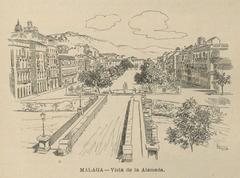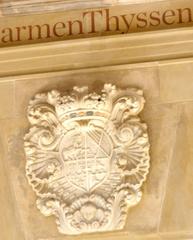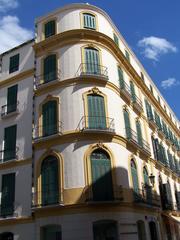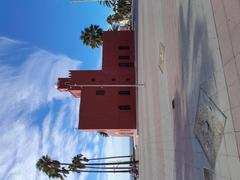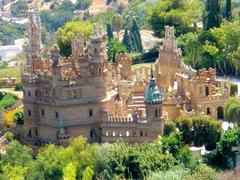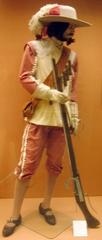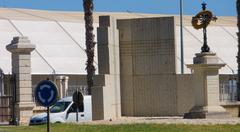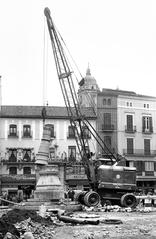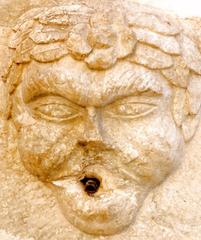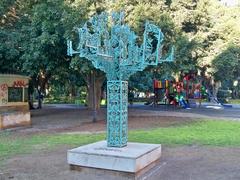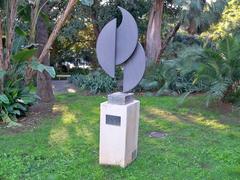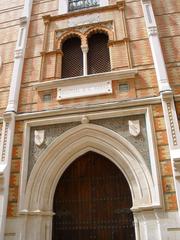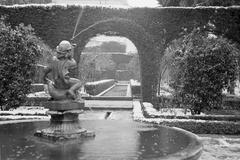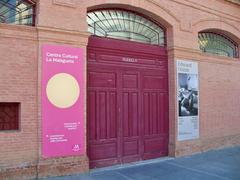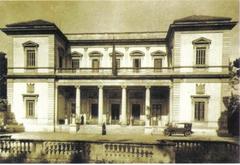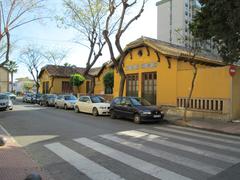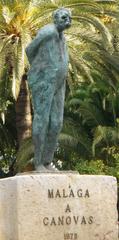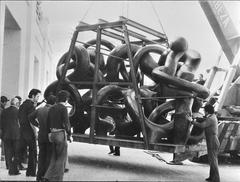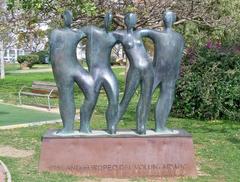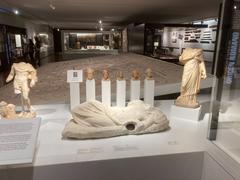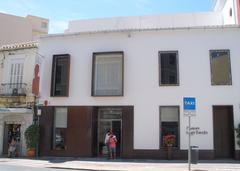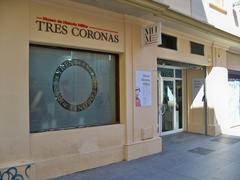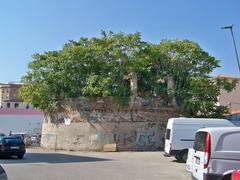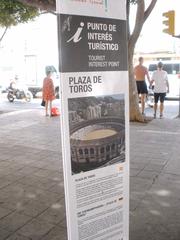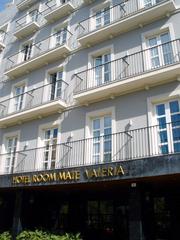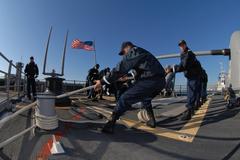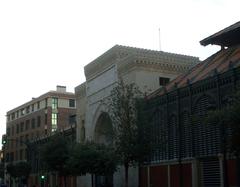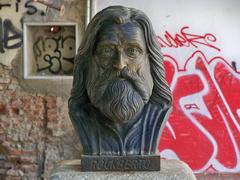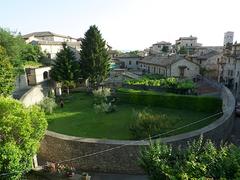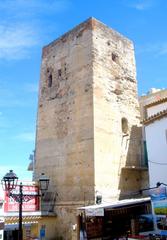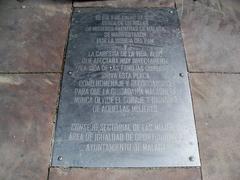Gneisenau Monument Málaga: Visiting Hours, Tickets, and Travel Guide
Date: 03/07/2025
Introduction: A Lasting Symbol of Solidarity
The Gneisenau Monument in Málaga stands as a powerful memorial to one of the city’s most poignant maritime tragedies and as a testament to enduring international friendship. On December 16, 1900, the Imperial German Navy ship SMS Gneisenau was lost in a fierce Levante storm just off Málaga’s harbor, resulting in the deaths of 41 German sailors and several local rescuers. The disaster not only marked a significant chapter in Málaga’s history but also forged a unique bond between the people of Málaga and the German nation, a relationship still honored today through annual commemorations and cultural events (Cementerio Inglés Málaga; La Opinión de Málaga; Costa Nachrichten).
Contents
- Introduction
- Historical Background
- The Tragedy and Immediate Aftermath
- The Monument’s Design and Symbolism
- Puente de los Alemanes: Bridge of Friendship
- Visiting the Gneisenau Monument: Hours, Tickets, and Accessibility
- Nearby Historical Sites
- Preservation and Commemoration
- Annual Events and Cultural Impact
- Frequently Asked Questions (FAQ)
- Conclusion
- Further Resources
Historical Background
On the morning of December 16, 1900, while anchored off Málaga’s port, the SMS Gneisenau encountered a devastating storm. Attempting to seek the safety of the harbor, the ship was overwhelmed by the wind and waves, crashing against the breakwater. The ship quickly broke apart, sinking before the eyes of the city. Of the 470 crew, 41 perished, including Captain Karl Kretschmann and First Officer Richard Prüfer. Málaga’s citizens responded heroically, saving most of the crew but suffering losses among their own ranks (Malaga Historia; Costa Nachrichten).
The aftermath saw Málaga honored with the title “Muy Hospitalaria” (“Very Hospitable”) by Queen Maria Christina, a distinction still displayed on the city’s coat of arms. The German Empire recognized local bravery with medals and, in a gesture of gratitude, would later fund the construction of a bridge that remains a city landmark.
The Monument’s Design and Symbolism
Located within the tranquil English Cemetery (Cementerio Inglés), Spain’s oldest Protestant cemetery, the Gneisenau Monument serves as the final resting place for the German sailors and a focal point of remembrance. The monument, completed in 1900, features a prominent stone mausoleum adorned with a laurel wreath and a ribbon in German national colors. The individual graves of Captain Kretschmann and First Officer Prüfer are marked with personal inscriptions, honoring both their service and sacrifice (Cementerio Inglés Málaga).
A second monument, situated in the Paseo del Parque near Málaga’s City Hall, was designed by German sculptor August Vogel. This granite and bronze memorial is topped with a bronze eagle—symbol of the German Empire—with classical motifs such as laurel wreaths and maritime symbols. Its austere design reflects the somber nature of the tragedy and stands as a beacon of international solidarity (Wonders Stays).
Puente de los Alemanes: Bridge of Friendship
In recognition of Málaga’s bravery and selflessness, Emperor Wilhelm II of Germany funded the Puente de los Alemanes (“Bridge of the Germans”), inaugurated in 1909. This steel bridge across the Guadalmedina River remains a daily reminder of the cross-cultural friendship forged in tragedy, with a commemorative plaque expressing Germany’s gratitude (Costa Nachrichten).
Visiting the Gneisenau Monument: Hours, Tickets, and Accessibility
English Cemetery (Cementerio Inglés)
- Location: Calle de la Cruz, Málaga; easily accessible from the city center.
- Visiting Hours: Typically open daily from 9:00 AM to 6:00 PM. Always confirm via the official website as times may vary seasonally.
- Tickets: Entrance is often free, though donations are appreciated to support preservation.
- Accessibility: The cemetery is generally accessible, though some paths may be uneven. Assistance can be requested at the entrance.
- Guided Tours: Occasionally available—check with the cemetery or local tourism offices for schedules.
Paseo del Parque Monument
- Location: Paseo del Parque, near Málaga City Hall.
- Visiting Hours: The park is open year-round, from early morning to late evening.
- Tickets: No fee; the monument is in a public space.
- Accessibility: Fully accessible via paved paths; benches and shade nearby.
Nearby Historical Sites
Málaga’s historical center offers a wealth of attractions within walking distance of both monuments:
- Alcazaba Fortress: Moorish citadel with panoramic city views.
- Roman Theatre: Ancient ruins adjacent to the Alcazaba.
- Málaga Cathedral (“La Manquita”): Iconic Renaissance-Baroque church.
- Museo Picasso Málaga: Celebrating the city’s most famous artist.
- Puente de los Alemanes: The bridge gifted by Germany (elespanol.com).
Preservation and Commemoration
Preservation is actively supported by the German Consulate, with recent donations ensuring the upkeep of both the cemetery monument and related archives (Sur in English). Annual memorial ceremonies, often held on December 16, see participation from German naval representatives, local authorities, and descendants of survivors. These events foster intercultural dialogue and remembrance (costadelsol-online.es).
Annual Events and Cultural Impact
The Gneisenau tragedy and its aftermath have inspired numerous artworks, memorial events, and educational initiatives. The 125th anniversary in 2025 will feature exhibitions, concerts, conferences, and ecumenical ceremonies, reflecting the ongoing significance of the event in Málaga’s cultural memory (La Opinión de Málaga). Artworks by local artists and displays in museums ensure the story remains accessible to new generations (lapaseata.net).
Frequently Asked Questions (FAQ)
Q: What are the visiting hours for the Gneisenau Monument?
A: The cemetery monument is open daily (typically 9:00 AM–6:00 PM); the park monument is accessible year-round during park hours.
Q: Is there an entrance fee?
A: The park monument is free. The cemetery may request a modest donation.
Q: Are guided tours available?
A: Yes, especially for the cemetery. Inquire at the site or local tourism offices.
Q: Is the monument accessible for visitors with disabilities?
A: Both sites are generally accessible; some historic paths may require caution.
Q: When are commemorative ceremonies held?
A: Annually on December 16, the anniversary of the tragedy.
Conclusion
The Gneisenau Monument is more than a memorial—it is a living testament to the values of courage, hospitality, and international friendship. Its story enriches Málaga’s layered history and offers visitors a chance to reflect on the enduring power of compassion across borders. Whether you’re a history enthusiast, a cultural traveler, or simply wish to pay respects, this site is a must-visit during your exploration of Málaga.
Enhance your experience with the Audiala app, which provides up-to-date guides, maps, and event notifications for Málaga’s top historical attractions. Follow Audiala on social media to stay informed about commemorative events and travel tips.
Further Resources
- Cementerio Inglés Málaga
- La Opinión de Málaga
- Costa Nachrichten
- Sur in English
- costadelsol-online.es
- lapaseata.net
- elespanol.com
- Wonders Stays
- Spain.info
- Tripindicator
